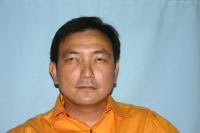Hello:
Last October 16, ALPers Andrew Ian Chan and I went back to PAGASA Observatory in UP Diliman after an unsuccessful try last October 15 to try to recover Comet Hartley 2 under sub-urban condition.
Conditions last night was far better than what we had the other day. Last night's transparency was good and amid passing clouds, we could see lots of stars through the cloud breaks that we decided to setup our imaging equipment to try to image it. James brought along a portable setup in Canon 500D DSLR with Canon EF 100-400mm f/4.5-5.6 IS Lens on Kenko Sky Memo-R mount while Andrew brought along his Canon 500D DSLR on his trusty Skywatcher 80ED refractor on Vixen GP mount with Sky Sensor 2000 system.
We initially use naked eye as well as 10x50 binoculars to try to see if we can see it. Unfortunately, we weren't able to see it thus we employ imaging technique we used before during our tandem recovery of Comet McNaught at Caliraya before.
After double checking the comet position through James' StarMap Pro software in Iphone 3G, they aimed their scope and lens to the predicted position and we finally got to recover the elusive comet :) LOL
Some slight haze were present during the session thus they weren't able to expose longer exposure to get better image of the comet. The comet was a bit dim through 1-2 minute exposure as they had to contend with fighting the Moonlight glow as the Moon was still present in the western sky. Nevertheless, after 2 days of numerous mosquito bites, they finally got to image the comet! As James told Andrew, on their first night, he was bitten by mosquito more than 46 times on the first try :) LOL But it was still worth the itch :) LOL



After imaging the comet, they decided to stay a little longer to test their mount tracking as well use the opportunity to image the Waxing Gibbous Moon as well as some deep sky object (DSO) such as M42 Orion Nebula as well as M45 Pleiades star cluster. It was Andrew's first attempt on the DSOs so his results were quite satisfactory and is looking forward to go to dark skies again in Caliraya maybe next month to get better sky conditions for him to be able to get his favorite DSO images for keeps.
At around 1:30am, they packed up and have a group shot to have a souvenir image of their successful recovery of the comet under sub-urban condition :)


















































